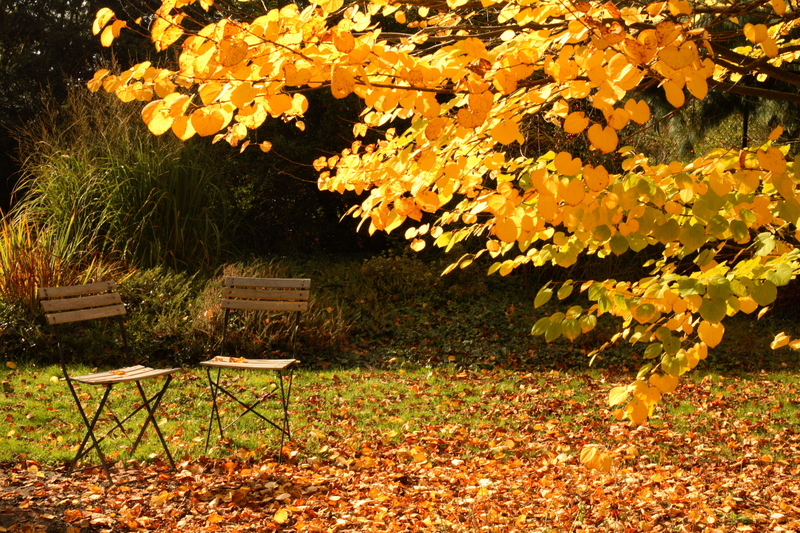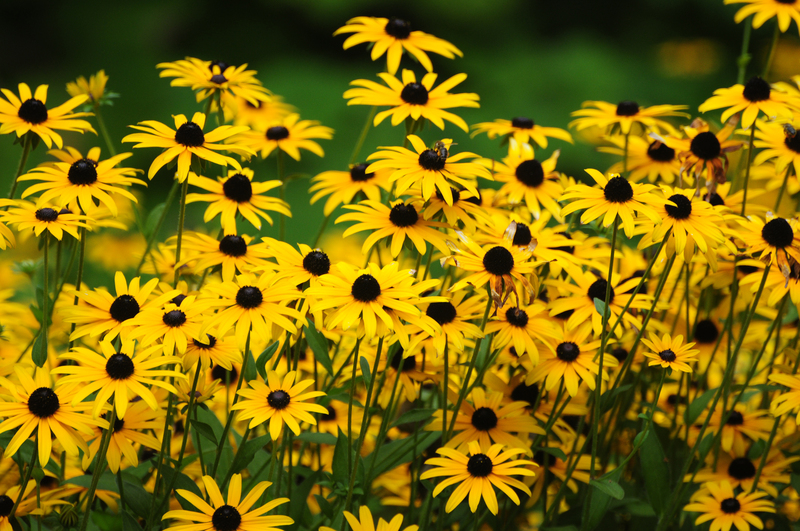Container Gardening: Cultivating Green Spaces Anywhere
Posted on 15/08/2025
Container Gardening: Cultivating Green Spaces Anywhere
Container gardening is revolutionizing the way we think about cultivating plants. Whether you have a sprawling backyard, a tiny urban balcony, or just a sunny windowsill, container gardening allows anyone to bring lush greenery, vibrant flowers, herbs, and even vegetables into their living space. In this comprehensive guide, we'll explore how you can nurture your own green oasis no matter where you live, highlighting the benefits, techniques, and best practices for successful container gardening.
What is Container Gardening?
Container gardening is the practice of planting and growing plants exclusively in containers instead of directly in the ground. This flexible approach to gardening can be adapted to fit balconies, patios, rooftops, porches, or even indoor spaces like kitchens and living rooms. With container gardening, you can enjoy the joys of gardening virtually anywhere--hence the phrase, "cultivating green spaces anywhere."

Benefits of Container Gardening
- Space Efficiency: Ideal for small living spaces or areas with poor soil.
- Mobility: Easily move containers to optimize sunlight, temperature, or redesign your space.
- Pest Control: Isolate plants to reduce the spread of pests or diseases.
- Accessibility: Raised containers are easier to manage, reducing the need for bending.
- Versatile Design: Use different containers, colors, and arrangements to personalize your garden.
Choosing the Right Containers
Material Matters
Choosing the right container is crucial for your plant's health and your garden's style. Common container materials include:
- Terracotta: Classic and porous, but dries out quickly.
- Plastic: Lightweight, affordable, and retains moisture well.
- Ceramic: Decorative with great insulation, but can be heavy and expensive.
- Metal: Modern and sleek, ideal for contemporary designs but can heat up fast.
- Wood: Natural look and good insulation, but may rot over time.
Size and Drainage
Always select a container that suits your plant's root system. Ensure there are adequate drainage holes to prevent root rot. Larger containers hold more soil and moisture, reducing the frequency of watering but require more space.
Soil and Growing Mediums: The Foundation for Success
The right soil mix can make or break your container garden. Avoid using dirt straight from the ground--it's often too dense and may harbor pests. Instead, opt for commercial potting mixes or prepare your own blend with:
- Peat moss or coconut coir for moisture retention
- Composted organic matter for nutrients
- Perlite or vermiculite for aeration
- Sand (optional, for improved drainage)
Tip: Add a slow-release fertilizer to your mix to provide steady nutrition.
Choosing the Best Plants for Container Gardens
Edible Plants
- Herbs: Basil, mint, parsley, chives, and thyme thrive in containers.
- Vegetables: Tomatoes, peppers, lettuce, radishes, and spinach suit container life.
- Small fruits: Strawberries, dwarf blueberries, and certain citrus varieties do well.
Ornamental Plants
- Annuals: Petunias, marigolds, impatiens, and zinnias add rapid color and impact.
- Perennials: Hostas, daylilies, and ferns offer stability and low-maintenance greenery.
- Succulents and Cacti: Perfect for sunny, dry spots and low-water routines.
Strategic Planting
Mix and match plants according to sunlight requirements, growth habits, and container size. Experiment with textures and colors for a visually stunning arrangement.
How to Start a Container Garden: Step-By-Step
1. Planning Your Space
Assess your available area--measure it, consider the weight capacity (especially for balconies), and note sun and shade patterns throughout the day.
2. Selecting Containers and Plants
- Match container size to mature plant size
- Group plants by water and sunlight needs
- Consider aesthetic appeal and arrangement
3. Preparing the Soil
Fill your containers with the chosen potting mix, leaving about an inch below the rim for easy watering.
4. Planting
- Gently remove plants from nursery pots
- Loosen root balls and plant at the appropriate depth
- Firmly fill soil around plants and water well
5. Maintenance
Regular care is vital for container gardens:
- Water frequently, as containers dry out faster than ground beds
- Feed plants every few weeks with liquid fertilizer or compost tea
- Trim dead leaves and spent blooms to encourage growth
- Rotate containers for even sunlight exposure
Overcoming Common Container Gardening Challenges
1. Watering Woes
Containers dry out quickly--especially in hot weather. Use mulch on the soil surface, group pots together for shade, and consider self-watering containers for convenience.
2. Fertilizer Needs
Since nutrients wash out faster, fertilize more regularly. Follow product directions or opt for organic fertilizers to nourish your plants over time.
3. Pests and Diseases
While containers offer some protection, regular inspection is crucial. Remove affected leaves and use natural pest remedies when possible.
Seasonal Container Gardening Tips
Spring
- Refresh soil and plant early crops like lettuce and peas
- Start seeds indoors for warm-weather varieties
Summer
- Choose heat-tolerant plants
- Water daily during hot spells
- Feed flowering plants to maximize blooms
Autumn
- Switch to cool-season vegetables like kale and chard
- Plant ornamental cabbages and pansies for color
Winter
- Move containers indoors or group together for protection
- Mulch heavily and reduce watering
- Try indoor gardening with herbs and microgreens
Creative Container Gardening Ideas
- Vertical Container Gardens: Use wall-mounted pockets or stacked planters to maximize small spaces.
- Upcycled Containers: Repurpose old buckets, barrels, bathtubs, or tins for a rustic, eco-friendly look.
- Theme Gardens: Create herb, salad, or pollinator-friendly container gardens for specific needs.
- Mobile Gardens: Attach wheels to large containers to chase the sunlight or redesign your outdoor space with ease.
Design Tips for Attractive Container Gardens
- Thriller, Filler, Spiller: Place a tall focal plant ("thriller") in the center, surround with medium-sized companions ("filler"), and let trailing plants ("spiller") cascade over the edges.
- Color Coordination: Match blooms and foliage to complement your home or patio decor.
- Mix Textures: Combine glossy leaves, airy grasses, and bold flowers for visual interest.
- Group Varying Heights: Place containers at different heights for depth and movement.
Container Gardening for Urban Spaces
City dwellers often lack access to traditional lawns, but container gardening urban green spaces are thriving. Rooftops, balconies, windowsills--even stoops--can host jungle-like retreats or food-growing projects.
- Balconies and Patios: Use railing planters and vertical towers to maximize limited areas.
- Windowsills: Small pots and herb gardens bring greenery inside and are perfect for culinary enthusiasts.
- Community Gardens: Join or start shared container garden projects on rooftops or public spaces to foster community spirit.
Sustainability and Container Gardening
Container gardening is increasingly popular among eco-conscious gardeners aiming to reduce their environmental impact. Consider the following sustainable practices:
- Use natural soil amendments and organic fertilizers to avoid chemical runoff
- Repurpose containers and reduce plastic waste
- Harvest rainwater for irrigation in outdoor spaces
- Grow pollinator-friendly plants to support local ecosystems

Frequently Asked Questions
- Q: How often should I water my container garden?
A: Water when the top inch of soil feels dry--usually once daily during hot weather, less in cooler months. - Q: Can I reuse potting soil?
A: Yes, but refresh it annually with compost and new nutrients; remove old roots and debris first. - Q: What are self-watering containers?
A: These have built-in reservoirs that reduce maintenance and keep roots consistently moist. - Q: Do container gardens attract pests?
A: Fewer than traditional gardens, but inspect regularly and use organic pest solutions if needed.
Conclusion: Bring Nature Closer, Anywhere
Container gardening proves that anyone can cultivate green spaces anywhere. With a little creativity, proper planning, and steady care, your home or apartment can become a thriving haven of nature, beauty, and productivity. Whether you grow fresh vegetables, fragrant herbs, or show-stopping flowers, container gardening offers a customizable, rewarding, and accessible approach to urban and suburban gardening. Now's the time to grab your pots, select your favorite plants, and start nurturing your own portable paradise!
Ready to get started? Browse local nurseries, repurpose containers, and transform any space--no matter how small--into a flourishing, green retreat. Happy gardening!
```
